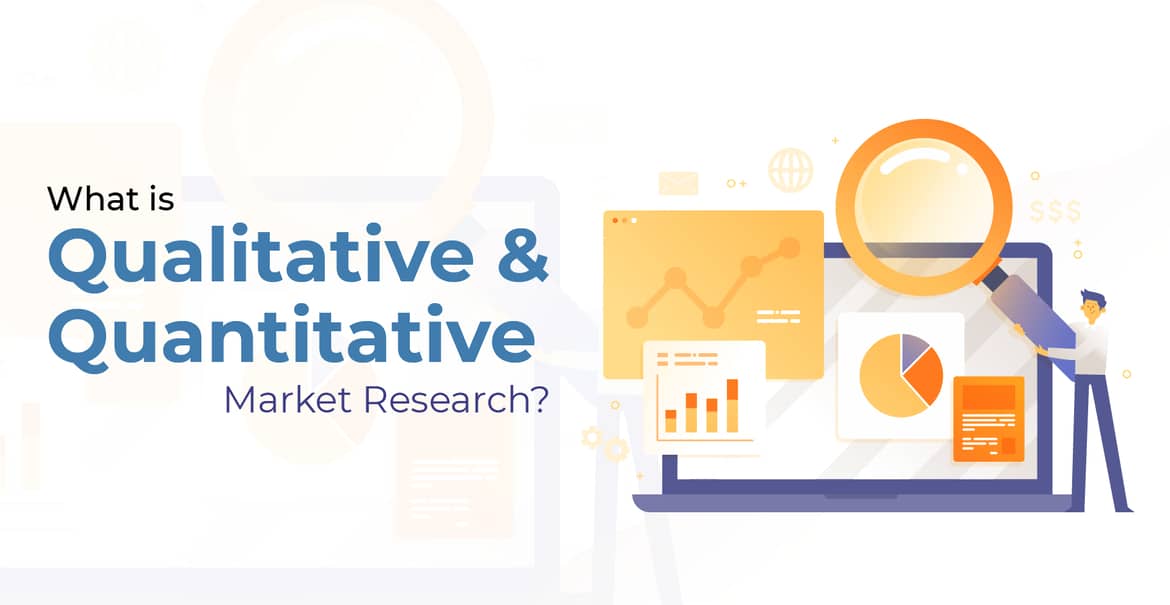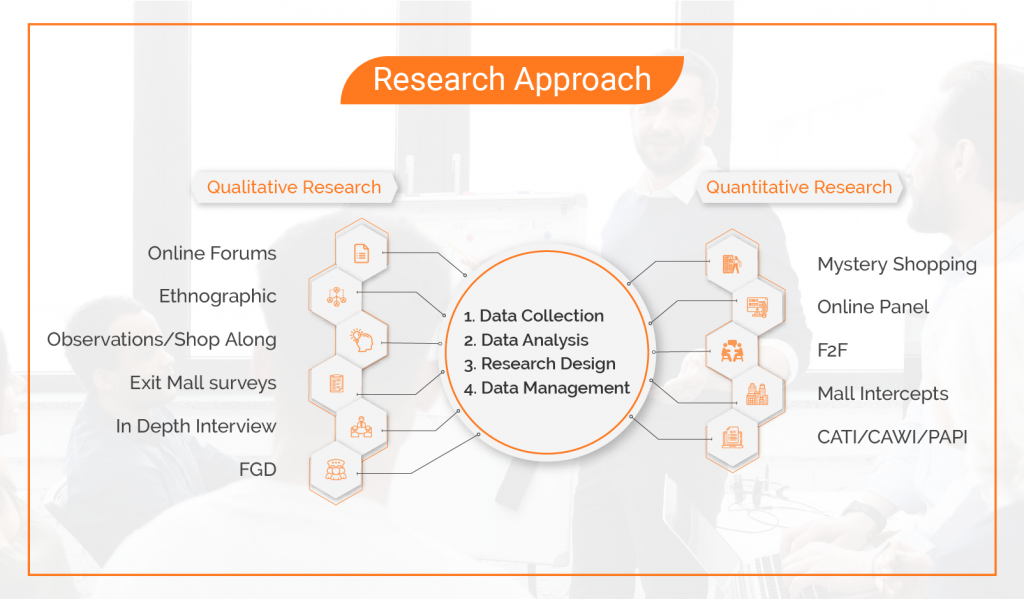What is Qualitative and Quantitative market research?

There are many important decisions to put your efforts in Market Research, one of the most crucial methods is whether to conduct qualitative or quantitative market research. You can obtain both quantitative and qualitative data using different methods. It’s important to use a method of data collection to help address your research question(s).
Qualitative Research:
Seeks to answer questions about why people are trying to act in the way they do. It provides extensive details on human behaviour. However, numbers such as national identification number, telephone number, etc. are considered qualitative data as they are categorical and unique to one individual. Examples of qualitative data include sex (male or female), name, state of origin, citizenship, etc
Qualitative Methods:
- Modelling
- Empirical
- Experimental
Research Design based on seven methods:
- Data Collection
- Data Processing
- Instrument Creation
- Application Validation
- Ethnographic Research
- Case Study Research
- Process of observation
It classified the two ways of approach:
Deductive Research- It is concerned with “developing a current theory-based hypothesis (or hypotheses) and then constructing a hypothesis testing strategy.” This requires first intake, second assumptions, checking and finalization.
Inductive Research: It also known as inductive reasoning starts with the observations and as a result of findings; hypotheses are formulated at the end of the research cycle. Experience patterns, similarities and regularities (premises) are observed to arrive at conclusions (or create theory)
Qualitative Technology:
In Qualitative, there are three technology developments that generate a substantial improvement in the effectiveness of qualitative research and provide customer insights that push marketing and innovation teams forward. Research is “explaining phenomena by collecting numerical data analyzed using mathematically based (especially statistics) methods.” *
A panel research group is different from focus groups and is employed for a wider scope of the survey. Panel research for the market survey first became prevalent in early 1948, and in recent years it has gained significant popularity among organizations.
- Automated Micro-Targeting: By integrating this social media technology, companies can shorten the time from weeks to days to approach and hire the participants. This shorter-term, more mobile qualitative online research offers iterative perspectives.
- Virtual-Assisted Design and Data Collection: One of the biggest challenges of gathering qualitative consumer insights online is to suss out how to gather the right data, but technology takes the work out of the design and makes it faster and easier to gather high-quality data. It began with qualitative tools to sequence participants through a series of video or text-based questions that moderators “programmed.”
- Smarter Reporting Automation: In the past, a manual process has been to extract consumer insights from the qualitative data. This smarter automation strengthens the way in which key ideas are found and communicated, making it easier for teams to make decisions and find solutions within a single project or collective.

Quantitative Market Research:
Quantitative market research is the collection of numerical data that resulting in statistical analysis to know and understand trends in the data. The main characteristic of quantitative market research is that it allows for comparisons and current trends in the data to be easily available. It is to glean reliable, standardized facts and stats to guide key business decisions, like “is there a strong product in the market to the competition?” or “Who are our target customers?”
Quantitative Methods:
- Surveys
- Experiments
- Observations
It classified the two ways of approach:
Statistical Data Analysis: You survey 600 students at your university and ask them questions such as: “on a scale from 1-10, how satisfied are your with your professors?”
Graph Rated Analysis: Statistical analysis of data can be performed and conclusions can be drawn such as: ‘Average students rated 4.4’
Quantitative Technology:
The analysis is the method of collecting and analyzing tangible and verifiable data such as sales, market share and wages to understand a company’s actions and results.
Regression Analysis: It helps determine how interest rates affect the behaviour of consumers with respect to investing in assets. Using mathematical equations, this means projecting or estimating the effect of one variable on another. By using Regression Analysis, a business owner can establish whether there’s a positive or negative correlation between the two variables.
Linear Programming: Linear programming is a quantitative approach that decides how to achieve such an optimal solution, for instance, most enterprises sometimes experience a shortage of resources such as facility space, manufacturing equipment and labour. In such situations, managers of companies need to find ways of effectively allocating resources.
Data Mining: It combines computer science knowledge and mathematical approaches. It helps to analyze very broad data sets, intending to identify hidden partners or similarities within them.
Quantitative Research Introduce Mixed Mode Methodology:
If you need to evaluate the methodology of the survey, you should use these three methods that perform the study appropriately.
- CATI – Computer Assisted Telephonic Interviewing:
It is a technique of telephone survey interviews that connect interviewees with B2B services or consumers. For example, the system will manage contacts according to the rules set by the administrators; after 15 minutes, contacts with a busy line will show up again. If a person responds to the call but is not present for the interview, the interviewer can also arrange an appointment so that the CATI program can automatically display the person again at the scheduled date and time. - CAWI – Computer-Aided Web Interviewing:
It is internet survey techniques through which the interviewer follows a website-based script and is also known as online market research methodology form. The link can be published on a website or sent via email, and then Respondents log in to the interview by clicking on a link to introduce the survey, and then the survey questions will be answered. - CAPI – Computer Assisted Personal Interviewing:
This is an electronic system method in which the interviewer offers answers to the question the respondent has asked. It replaces PAPI (Paper Aided Personal Interviewing), known as the normative framework by which the enumerator fills out questionnaires in a paper form. The CAPI offline app can be installed before handing over the device to the interviewer or it can be downloaded directly by the interviewer from the Google Play or App Store. Then, the interviewer can log in to work on the survey assigned with credentials provided and collect offline surveys.